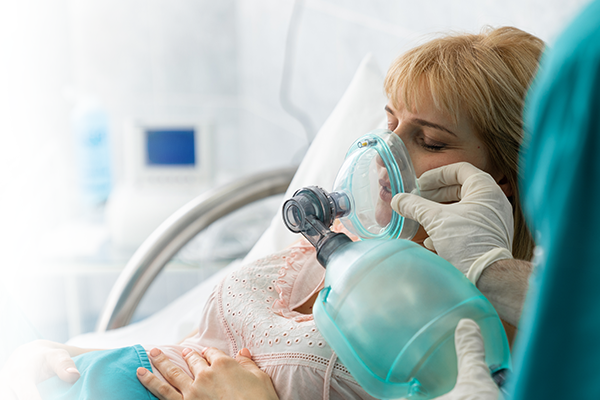Pain has been an indispensable part of any childbirth for centuries. This is a cause of fear for a large number of moms-to-be, so some of them prefer to have a cesarean section. In Poland, by law, every woman giving birth has the right to pain relief during labor. What methods are available? What is worth including in a birth plan?
Is there a fee for anesthesia during childbirth?
Since 2015, the most popular pharmacological method of labor pain relief, i.e. epidural analgesia, has been free in Poland. This intervention should always be performed and controlled by anesthesiologists. According to the NIK audit, many of the maternity wards inspected did not allow for proper, intimate use of delivery rooms. A recurring problem was the lack of bathrooms, and women did not have a chance for water immersion, for example, which is one of the non-pharmacological methods of relieving labor pain. According to the current regulation of the Ministry of Health, in addition to ensuring that women in labor have the opportunity to use pharmacological and non-pharmacological methods of pain relief, health care professionals should always inform the parturient in advance about the pain relief options available in the hospital, consult her choice and take it into account. It is worth including information on preferred methods in the birth plan created during the pregnancy. If the Parents have decided to bank stem cells, it should also include information about cord blood collection. If you still have doubts, check: https://www.pbkm.pl/komorki-macierzyste/dlaczego-warto
Pharmacological methods of relieving labor pains
There are three main and most commonly used methods of pharmacological pain relief during labor. The most popular of these: epidural (zzo) anesthesia. Laughing gas, i.e. nitrous oxide i.e. inhaled analgesia, as well as today’s very rarely used opioids (e.g. Dolargan).
Epidural anesthesia
This type of anesthesia is always administered by an anesthesiologist. This is also why, due to the current staff shortages, many women complain that at the time of their delivery, the anesthesiologist was not available because he was attending another operation at the time.
This method involves inserting into the epidural space of the spinal canal and leaving a small catheter there through which subsequent doses of anesthetic drug can be administered. The doctor usually first injects the skin with a local anesthetic to make the actual insertion as uncomfortable as possible for the woman in labor. Epidural anesthesia is usually given when the dilation is about 4 cm. When it exceeds 8 cm it is usually too late to insert a zzo catheter. Because they are performed at the height where the spinal cord is no longer present (L3-L4 or L5-L6), when done correctly, there will be no damage to the cord. Complications of epidural anesthesia include nausea, pruritus or lowered blood pressure. Contraindications to zzo include infection at the insertion site, blood clotting disorders or umbilical cord prolapse.
It is important to remember that epidurals are intended to reduce, not completely eliminate, labor pain. A woman in labor, despite the anesthesia, must feel the contractions coming in order to cooperate with the midwife and doctor to deliver the baby.
Laughing gas
The popular laughing gas is a mixture of oxygen and nitrous oxide (50%:50%), which is also known as inhalation analgesia. In many Polish hospitals, it is a good alternative to epidurals in the absence of an anesthesiologist. Its undoubted advantage is the ability of the laboring woman to “dose” the laughing gas. This is because the gas is administered through a special mask around the mouth. As a result, its side effects are also unlikely to be observed. Of course, there are ladies who experience great pain-relieving effects, but there are also those for whom nitrous oxide did not help during labor contractions.
Opiods
Opioid agents during labor are administered intravenously and intramuscularly. Pethidine used to be used, now remifentanyl is used for this purpose. However, they have been proven to cause respiratory depression in the newborn and other serious complications, so they are not widely used or recommended today.
Non-pharmacological methods of relieving labor pains
In addition to pharmacological remedies, a woman in labor should have other methods at her disposal, such as taking a shower, using ladders, a sako bag and special balls. He can also assume the position of his choice or listen to his favorite music. Some facilities also offer acupuncture, although this is more popular in western neighbors such as Austria.
TENS is gaining popularity . A lot of moms-to-be decide to buy or rent it while they are still pregnant. It is electrostimulation of the nerves to relieve pain. The da method is safe, but the effect depends on the individual person.
Be sure to check before delivery the available methods of labor pain relief at a particular hospital and indicate in the prepared birth plan your desire to use a particular method. Not all facilities have access to all possible methods, but they should provide the woman giving birth with the greatest possible psychological as well as physical comfort.
Rate this article:











